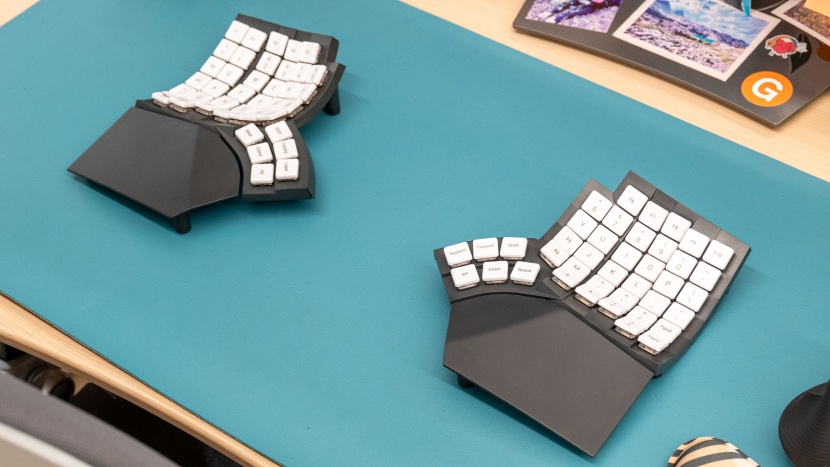At GearLab, we are tech fanatics who keep our fingers on the pulse of the latest advancements in hardware simply because we are passionate about it. We also believe this positions us very well to meaningfully test the top ergonomic keyboards for your benefit. Our process began with poring over the latest product ratings, user reviews, and tech articles from various sources across the web. We narrowed the list down to 9 of the most popular ergonomic keyboards on the market and bought them ourselves. Our testing methodology aims to provide a thorough and unbiased evaluation of ergonomic keyboards based on five key metrics: Ergonomics, comfort, typing experience, learning curve, and typing noise.
Ergonomics
It goes without saying that the efficacy of ergonomic features will make or break an ergonomic keyboard. Naturally, we weigh this metric much more heavily for keyboards in this category. To determine just how ergonomic a keyboard is, we start by looking for the following features:
*Split design (preferably adjustable)*Tenting (preferably adjustable)
*Tilting
*Palm rest
*Thumb keys
*Columnar key layout
*Concave key wells
*Mountable
We also consider how much we have to strain to reach all the keys on the keyboard. A typical keyboard layout with staggered rows is not necessarily conducive to ergonomic reaching. It is preferable for an ergonomic keyboard to have an ortholinear layout with keys arranged in straight columns, as this places the keys closer to the “home row” where your fingers naturally rest.
Comfort
It would be easy to meld comfort and ergonomics into one rating metric, but we differentiate them because many ergonomic keyboards sacrifice a relaxing experience in favor of an accessible and practical one. Our first step in evaluating comfort is to consider whether a keyboard has a palm rest and how high-quality it is. The ideal palm rest provides adequate support for the wrists and helps you position your hands so that you can reach the entire keyboard without straining yourself. We also measure the exact amount of force it takes to press the keys—if a keyboard requires more operating force, you are likely to feel the fatigue in your fingers after a long typing session.
Typing Experience
When we evaluate typing experience, we are specifically gauging how pleasant, fun, and natural it feels to use the keyboard. We arrive at a conclusion based on subjective feedback from three different testers, asking them to rate their experiences and provide notes on the overall type feel. We back these opinions up with cold, hard data. Using a MecMesin force-displacement tester, we collect precise measurements of keyboard operation force, tactile bump distance, actuation point distance, and overall key travel distance. By comparing these data points between keyboards, we can objectively compare the experience of using one ergonomic keyboard to another.
Learning Curve
Some ergonomic keyboards have vastly different shapes or key layouts compared to what you might be accustomed to on a typical keyboard. In many cases, there is a significant learning curve you might have to overcome before you can type with your usual speed and efficiency. We rate this learning curve based on our testers' personal difficulties (or lack thereof) in using each keyboard for a full day of their typical work activities. To represent this with some objective data, we asked each tester to undergo a words per minute typing and accuracy test upon first receiving each keyboard. They would then take the test again one day later to demonstrate how they fared against the learning curve.
Typing Noise
Having a noisy keyboard may seem like a small price to pay when the ergonomic factor can make a positive impact on your daily life. Even so, we evaluate this metric with the same thoroughness as any other because we know it might impact your buying decision. We measure the average volume of each keyboard's typing noise using a decibel reader from five feet away. We supplement this data by carefully listening to the keyboard's sound profile. Is it clicky, clacky, or thocky? Is there any scratchiness or hollowness that we can hear as we type? Is the sound pleasant and satisfying, or is it grating and annoying for those around us? We want to convey these impressions to you, especially if you plan to use your new ergonomic keyboard in a shared workspace.




